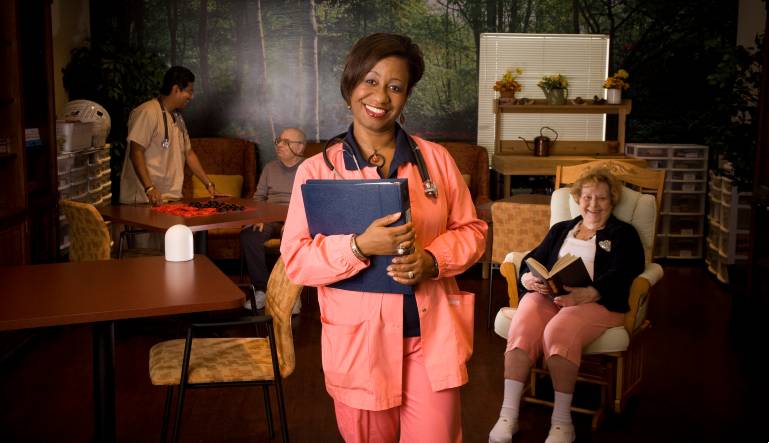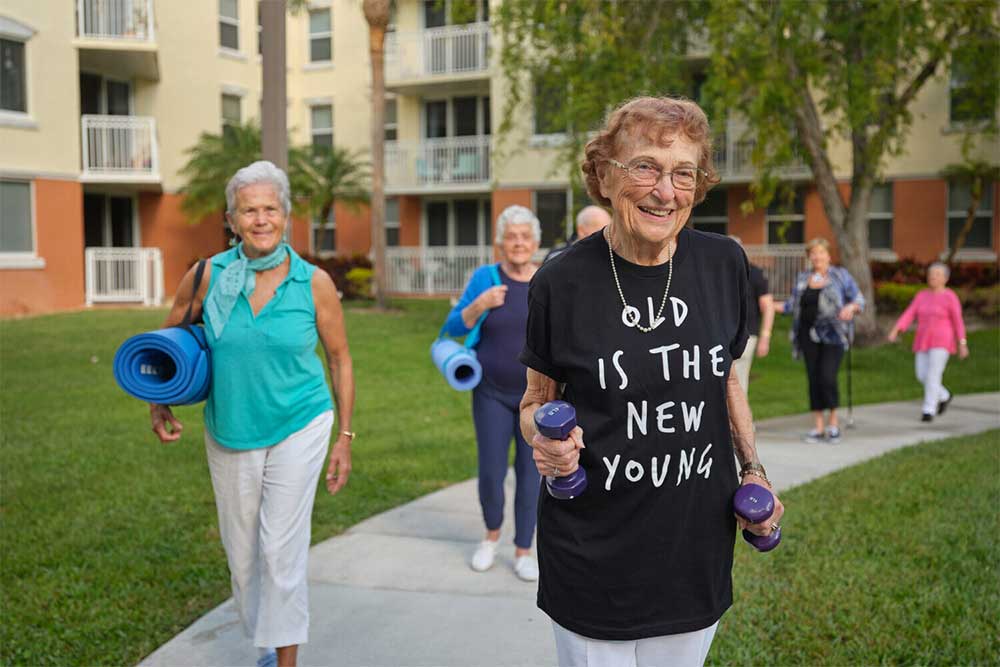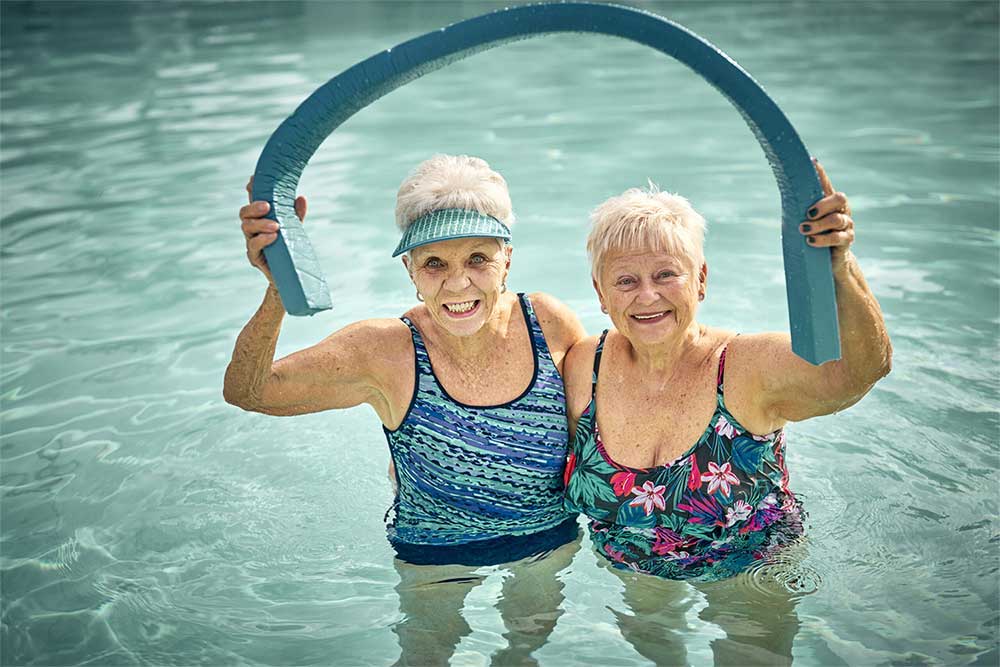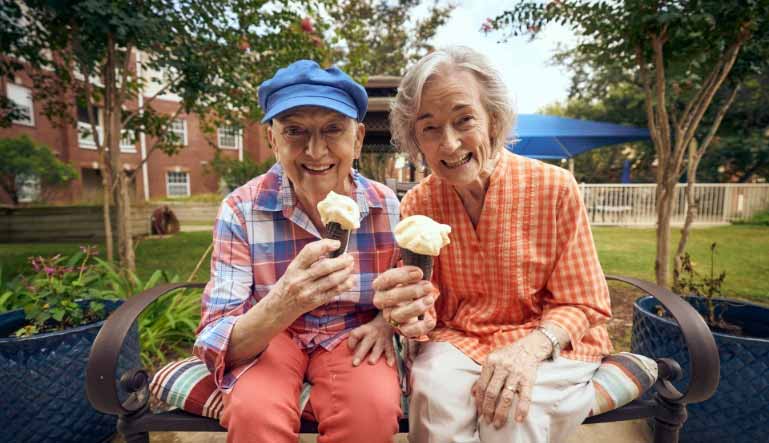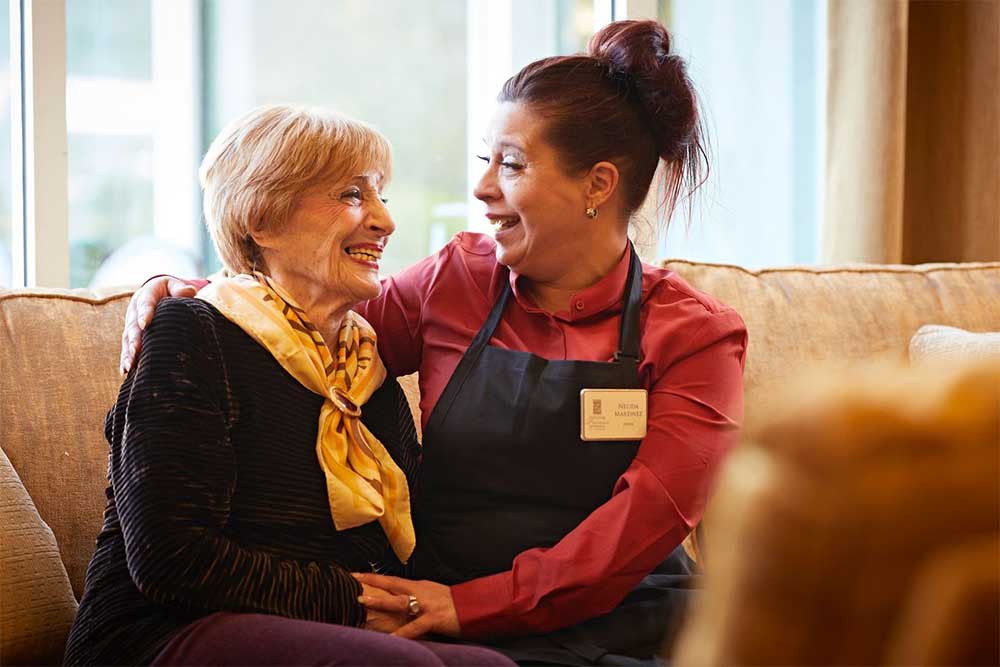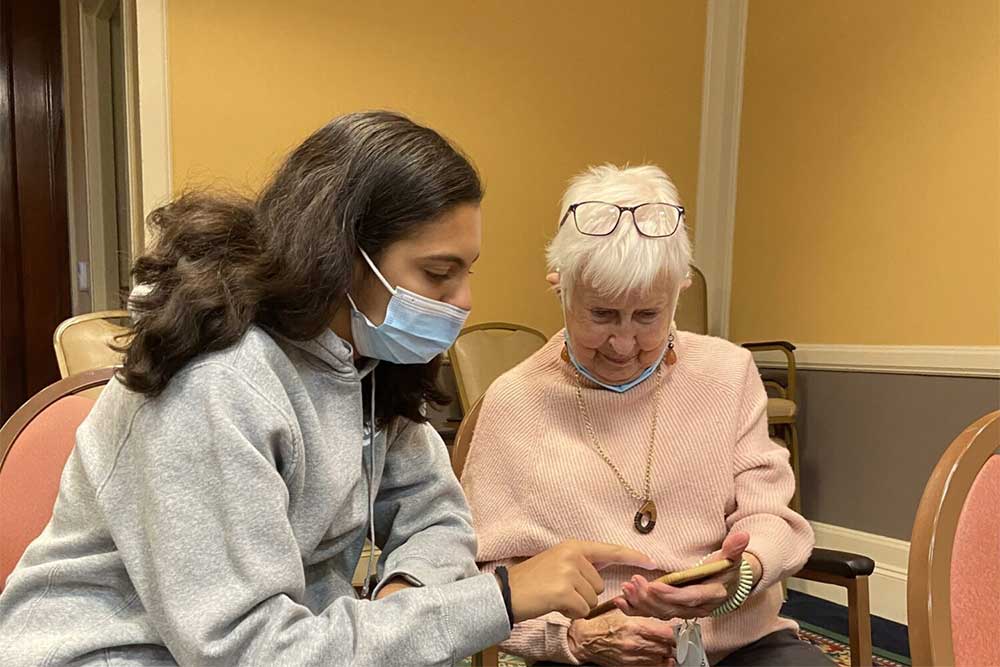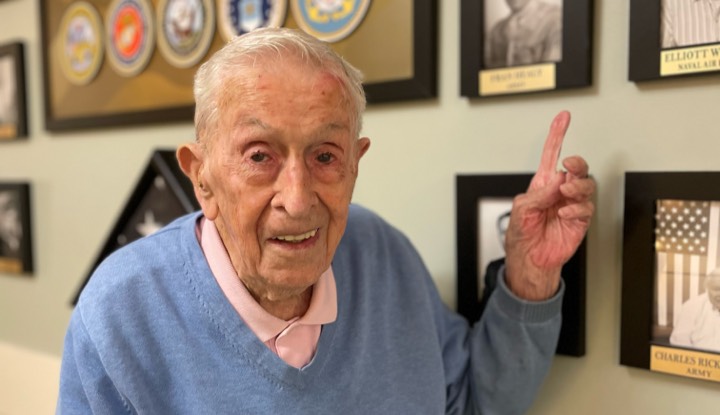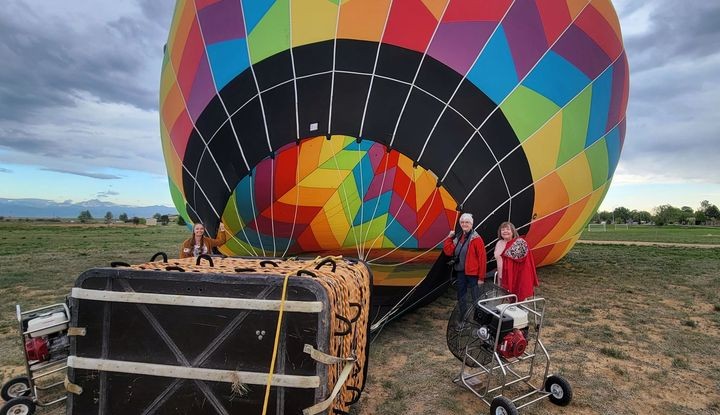Most people can’t tell you they landed on Omaha Beach on D-Day, fought at the Battle of the Bulge, or earned a Bronze Star for their courage during World War II. Cornelius Francis Healy isn’t most people.
Fran, as he’s more commonly known, is 101 years and six months old. He spoke about his life from his home at The Gables at Winchester, a Five Star senior living community in Winchester, Mass.
A call to duty
Fran Healy grew up in North Cambridge, Mass. or—as he puts it— “Tip O’Neill country,” referring to Thomas O’Neill, the former Democratic Speaker of the House of Representatives who served during the Carter and Reagan administrations.
Fran was drafted into the war toward the end of 1942, but he almost never left Massachusetts. He was allowed an exemption as the head of his family, helping support his widowed mother and two younger sisters. But feeling duty-bound to his country, Fran decided to enlist.
After his training, he was put on a convoy headed for England.
“The first day I remember it was only one or two ships, the next day a couple more, and about the third day we had about a dozen,” Fran said. “We were surrounded by U.S. destroyers who could drop it on the German submarines if they spotted them.”
While in England, Fran’s unit was attached to the Army’s 29th Infantry Division, known as the “Blue and Gray Division” for its blue and gray service badge. The unit was to become part of the largest seaborne invasion in history.
“They sent all these troops down to England, these fellows thought they were going to get 30 days off, but they were reassigned,” Fran said. “They were reassigned all right.”
The invasion
In their preparations for D-Day, Fran’s Major informed his unit they would be part of a provisional machine gun group after a large shipment of brand-new, heavy-duty half-track vehicles with mounted .50 caliber machine guns did not arrive in time for the invasion.
Fran spent the two nights before the June 6, 1944, D-Day invasion with no sleep, one while he waited to board a ship and the other while he crossed the English Channel. With bad weather overhead, Fran and his unit landed on Omaha Beach. By the time he stepped foot on the sand, the German defenses had been silenced and the fighting moved inland.
“There was no front line, everyone was out of position. The 82nd Airborne, none of them landed where they were supposed to,” he said. “It took a day or two for everyone to get back to their units to form a front line.”
Despite the extensive planning that went into D-Day, Allied troops were caught off guard by French hedgerow country, mounds of earth topped with branches and shrubs. These property markers stalled tanks and slowed the Allied advance.
Fran and his unit were headed to the French crossroads town of Saint-Lô. Due to the dense hedgerows, the 20-mile journey took them six weeks to hack and fight through. As U.S. soldiers moved inland, they were bombarded with German 88mm anti-tank artillery guns.
“It was awful,” Fran said.
Finding the courage
At one point during the trek, a shell exploded between Fran and another soldier. Fran wasn’t hurt, but his companion was hit with shrapnel.
“Here I am with a guy bleeding pretty badly, no first aid handy, but I spotted a rogue convoy about 900 feet away. So, I picked him up, half dragged him, half walked him,” Fran said. The convoy said medics would arrive in five minutes, so Fran waited and got his companion on a truck even as artillery shells blasted all around them.
After weeks of battling through hedgerows, Fran and his unit arrived at a hill on the outskirts of Saint-Lô. Fran volunteered to join a patrol to warn another unit of an impending artillery attack from the Germans. The volunteer patrol navigated the downhill terrain at night and delivered their message but were exposed by the sunrise on the way back. Under heavy machine gun fire from the Germans, Fran made it back to his unit in one piece.
Fran’s courageous act with the volunteer patrol earned him a Bronze Star, awarded to members of the United States Armed Forces for heroic achievement in a combat zone.
Once he reached Saint Lô, Fran’s unit pushed onward to pursue the Germans. He arrived in Versailles when Paris was liberated at the end of August. “We spent about a day or two there in Paris. You’d think the war was over the way they celebrated,” he said. “It was for them.”
The final push
The unit pushed toward Belgium over the next four months and there were even a few weeks of relative quiet that included a Thanksgiving dinner. But “all hell broke loose” on Dec. 16, 1944, when the Germans launched their last major offensive campaign on the Western front known as the Battle of the Bulge.
“The weather was terrible. The clouds were hanging so low. It was snowing all the time for that whole week,” Fran said.
After about a week of fighting, the skies began to clear and air support arrived. Even after several decades, Fran’s fondness for the P-51 Mustang hasn’t faded. After Christmas, Fran witnessed his first dogfight, a close-range fighter aircraft battle.
“We were watching them up in the sky and one fellow was watching with a pair of binoculars and said, ‘hey there’s a plane up there with no propeller.’” That plan turned out to be the German Messerschmitt Me 262, the world’s first operational jet-powered fighter aircraft.
Life after the war
Fran rode across the Rhine River into Germany as the war came to a close. When his unit came to the Elbe River in April of 1945, the Allies were planning how to divide up post-war Germany.
Fran ended his service by tallying points that soldiers earned toward discharge. He was eligible in September of 1945. Life back at home was difficult.
“When I came back home it was frustrating. I felt lost, I didn’t feel comfortable anymore. My family walked on eggshells and we didn’t know what to talk about,” he said. “It took me a long time.”
Fran eventually became a licensed civil engineer for Massachusetts and worked on the construction of all the major highways. He married Margaret “Peggy” Cummings, with whom he had corresponded with through the war. The couple raised three sons, Paul, Don, and Kevin. Peggy died in 1986 and Fran never remarried.
A home with The Gables at Winchester Senior Living Community
As a widow, Fran lived on his own for nearly 40 years. He moved into assisted living at The Gables three years ago and says it’s the best decision he’s ever made, in fact. He wishes he had moved in a lot sooner.
“Everyone takes such good care of me here,” he said.
In his free time, Fran loves to keep active and exercises three times a week. Each night he has dinner with the same three ladies he met on his second day after moving in.
“It’s great here,” he said. “Best thing that ever happened to me.”
Fran never discussed his experience during the war until he was in his 80’s. His apartment at The Gables is decorated with accolades, letters from Presidents, invitations, press coverage, and other wartime recognition. Plus, he’s got plenty of objects of grandfatherly and great grandfatherly love from his four grandchildren and seven great grandchildren.
On Fran’s 100th birthday, The Gables held a parade outfront of their building with friends, family, other veterans, firefighters, police, and more. As a Five Star community always committed to its residents, The Gables is installing a flagpole near its main entrance and will hold a special Veterans Day ceremony to celebrate its arrival.
“I think about it every day,” Fran said of his time in the war. “It never goes away. Sometimes different events come back during the day. 78 years ago, but like it was yesterday.”
Assisted living at Five Star can open a world of possibilities for you or your loved one. Trade in household chores and errands for stress-free living and enhanced independence. Find out what assisted living—and all our other living options—are all about.
Contact Us Today


